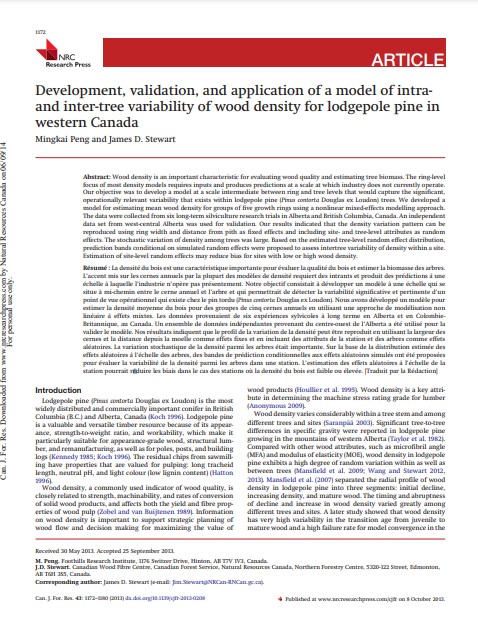Development, validation, and application of a model of intraand inter-tree variability of wood density for lodgepole pine in western Canada
Bosque Modelo:
Foothills
Temática:
Desarrollo humano
Tipo de documento:
Artículo científico
Resumen
Wood density is an important characteristic for evaluating wood quality and estimating tree biomass. The ring-level focus of most density models requires inputs and produces predictions at a scale at which industry does not currently operate. Our objective was to develop a model at a scale intermediate between ring and tree levels that would capture the significant, operationally relevant variability that exists within lodgepole pine (Pinus contorta Douglas ex Loudon) trees. We developed a model for estimating mean wood density for groups of five growth rings using a nonlinear mixed-effects modelling approach. The data were collected from six long-term silviculture research trials in Alberta and British Columbia, Canada. An independent data set from west-central Alberta was used for validation. Our results indicated that the density variation pattern can be reproduced using ring width and distance from pith as fixed effects and including site- and tree-level attributes as random effects. The stochastic variation of density among trees was large. Based on the estimated tree-level random effect distribution, prediction bands conditional on simulated random effects were proposed to assess intertree variability of density within a site. Estimation of site-level random effects may reduce bias for sites with low or high wood density
Información Bibliográfica
Autor:
Peng, M., & Stewart, J.D.
Revista:
Canadian Journal of Forest Research
Año:
2013
N°:
-
País :
Canadá
Páginas:
1172 - 1180
Volumen:
43
Idioma:
Ingles
Palabras claves
Model forest, Adaptatation, Canada





